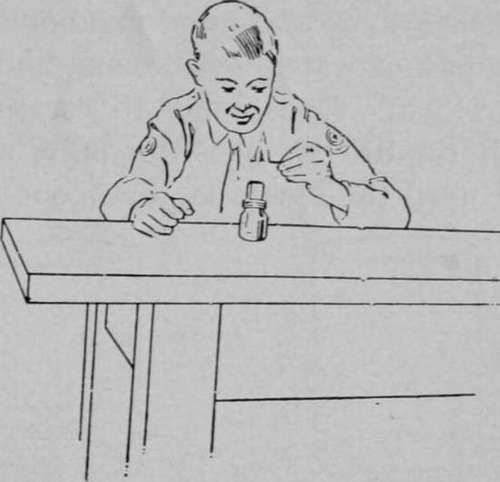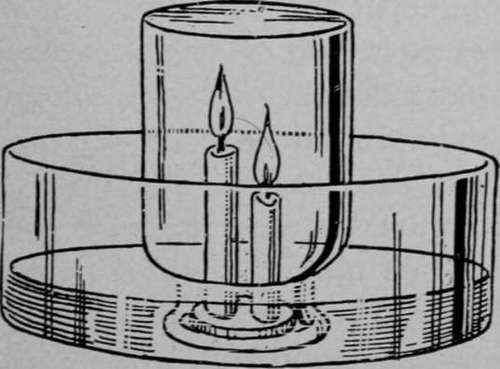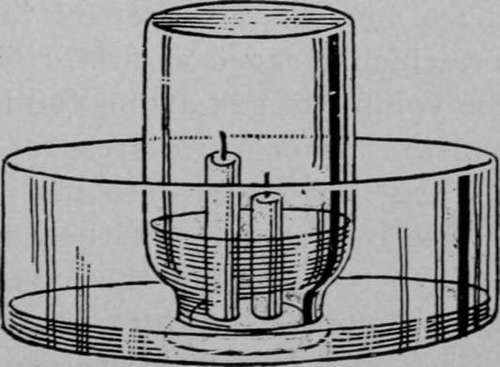Experiment 71. Air Used By Flames
Description
This section is from the book "Experimental Glass Blowing For Boys", by Carleton J. Lynde. Also available from Amazon: Experimental Glass Blowing for Boys.
Experiment 71. Air Used By Flames
Drop melted candle wax on a tin ca u cover and attach the bottoms of two candles to the cover (Fig. 94) ; use one candle about 6 inches long and another about 3 inches, stand them upright in a pan of water, light them, and invert a wide-mouthed bottle over them. Does some air escape at first due to expansion, do both candles go out, the taller one first, and does the water rise until the bottle is about one-fifth full?

Fig. 93. Magic


The Candles Go Out And The Water Rises
Cut a piece of candle 1/2 inch long, float it on a flat cork or can cover in the pan of water, light it, and invert a fresh empty bottle over it(Fig.95). Is the result similar? The "why" of it The water rises in the bottle because 1/5 of the air is used up by the burning candle. Air is 1/5 oxygen and 4/5 nitrogen. The oxygen unites with the burning gas of the candle and produces water vapor (H20) and carbon dioxide (C02) ; the nitrogen takes no part in the burning.
The water vapor (H20) condenses to water on c©oling and takes up very little space. The carbon dioxide remains a gas and occupies space, but this is offset by the volume of the air which escaped at first. The result is that the volume of gas at the end is about 1/5 less, and the atmospheric pressure on the water in the pan lifts water into the bottle.
The candle goes out because it must have oxygen to burn and the oxygen is used up.
Continue to:
- prev: Magic With Flames. Experiment 70. Magic Lighting
- Table of Contents
- next: Experiment 72. Water Produced By Fire
